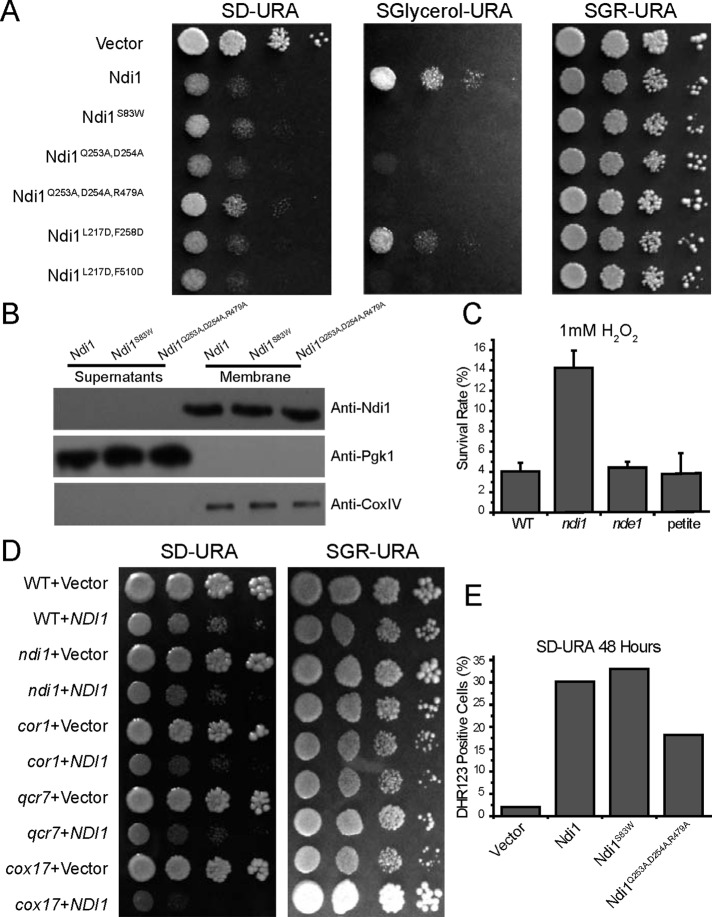FIGURE 2:
Proapoptotic activity of Ndi1 is independent of its ubiquinone oxidoreductase activity. (A) Loss of ubiquinone oxidoreductase activity is not associated with change of Ndi1 apoptotic activity. Shown here are spotting assays of ndi1-mutant strain transformed with the vector, Ndi1, Ndi1S83W, Ndi1Q253A,D254A, Ndi1Q253A,D254A,R479A, Ndi1L217D,F258D, and Ndi1L217D,F510D on SD-URA (respiration restricted), SGlycerol-URA (nonfermentable), and SGR-URA plates. Ndi1 overexpression inhibits cell growth in respiration-restricted media (glucose) but not glycerol or galactose/raffinose media. (B) Expression levels of several representative Ndi1 mutants are comparable to that of wild-type Ndi1, and these Ndi1 mutants are also associated with the mitochondrial membrane. (C, D) Ndi1 apoptotic activity is not dependent on ETC activity. (C) Viability testing of WT, ndi1, nde1, and petite yeast strains treated with 1 mM H2O2 indicates that loss of the ETC activity does not affect Ndi1-mediated apoptosis. (D) Various ETC mutants were tested for their effects on growth inhibition by Ndi1 overexpression. (E) Overexpression of Ndi1 mutants lacking oxidoreductase function also induced ROS when cultured in SD-URA, as shown by DHR123 staining with flow cytometry. Survival data are presented as the mean ±SEM of three independent experiments.

